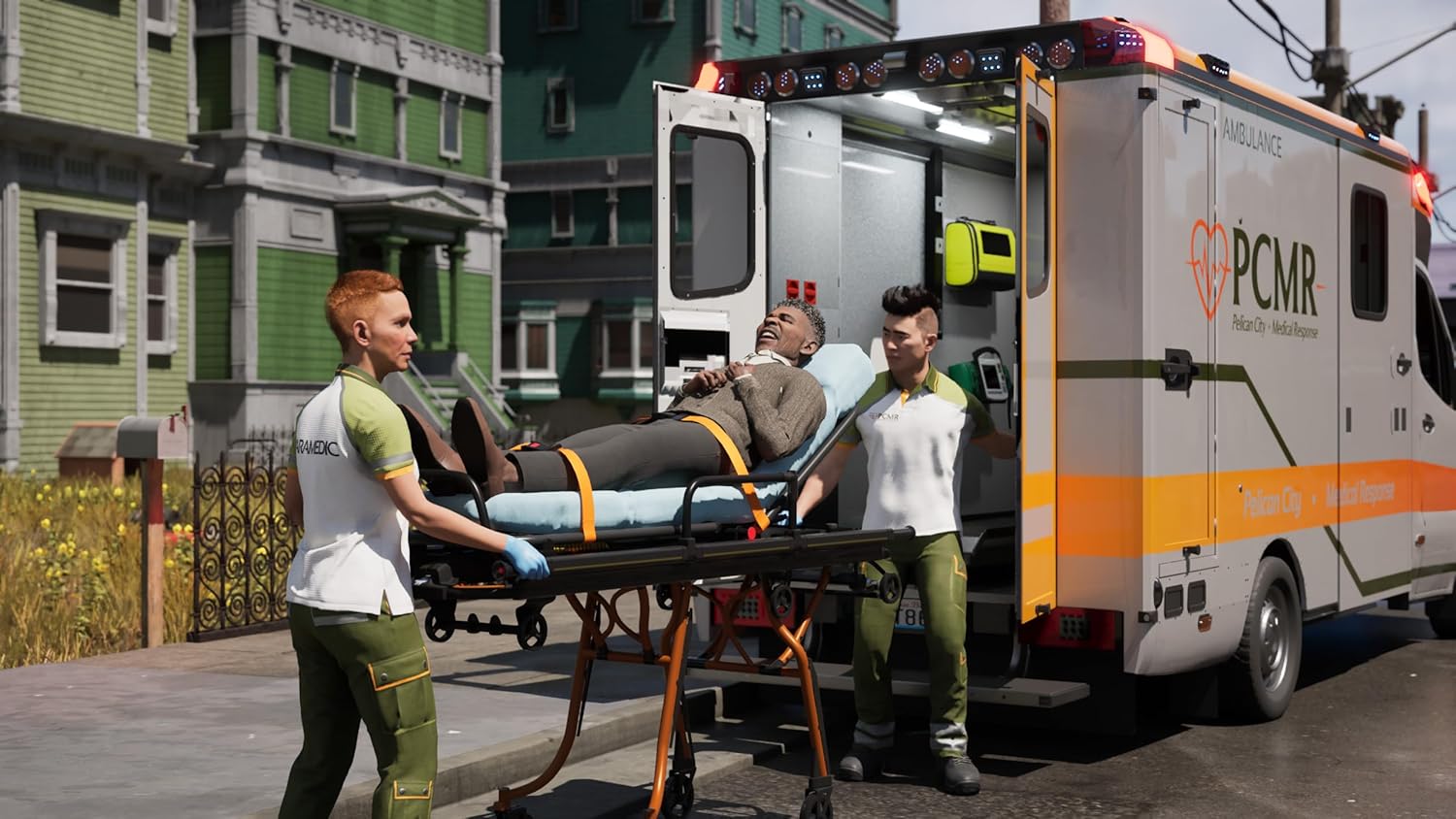I was eager to play the final product after seeing my first gameplay segments of Ambulance Life during Gamescom last summer. The idea of rushing through city streets, sirens blaring, and making life-or-death decisions on the fly compelled me on the show floor and I was curious to see how it could remain entertaining for the long run. The game aims to offer a realistic glimpse into the daily grind of paramedics, from stabilizing patients to choosing the right medical interventions under pressure. It’s an underexplored niche in the simulation genre, and on paper, it sounds like a winner but is it the game I was hoping for? Let’s find out!
Flatlining from the start
The opening moments set the stage well enough and I was enthusiastic to get things going after some mandatory tutorials. But while the game does a solid job of introducing basic medical procedures, it quickly becomes clear that the depth isn’t there. Most emergencies boil down to simple, scripted interactions, and the repetition sets in fast. Instead of feeling like you’re making critical medical decisions, it starts to feel like you’re following a boring checklist, removing much of the tension and unpredictability that makes real-life emergency work so intense and nerve-wracking.
Unfortunately, the gameplay loop lacks the variety that it needs to keep things entertaining. While the initial thrill of racing against the clock is effective, the missions themselves start to blur together. The game relies too heavily on a handful of scripted events, which means you’ll see the same types of medical cases pop up over and over. Whether it’s a heart attack, a broken leg, or a car accident, the interactions rarely change in any meaningful way. It doesn’t help that the AI for both civilians and patients is fairly basic, making the world feel more like a staged set than a real-life simulator.
The controls also leave a lot to be desired. Driving the ambulance feels stiff and awkward, lacking the weight and responsiveness needed to make high-speed navigation through traffic exciting. Inside the ambulance, interacting with medical tools is functional but clunky, often requiring too many precise inputs for simple tasks. And then there’s the graphics, a mixed bag to say the least. The game uses a more than capable engine to deliver some realistic visuals but it never really leaves the uncanny valley, to be honest. Facial expressions are crucial to see if a patient is in pain or if they are hiding something but it’s all a bit harder to really get into when everyone simply looks off. For what they were going for, the developers should have put some more time and effort into those animations and overall presentation.
There’s potential
That said, Ambulance Life isn’t entirely without fun or engaging parts. The game does a decent job of introducing players to some of the fundamental concepts of emergency medical care, even if it never quite delivers on its full potential. There’s an educational layer here that could be genuinely useful if expanded upon: learning how to assess symptoms, administer basic treatment, and prioritize care in high-pressure situations is an interesting angle that deserves better execution and maybe even a sequel or educational version. With more polish, deeper mechanics, and a wider variety of emergency scenarios, this could evolve into a genuinely compelling simulator.
Right now, though, Ambulance Life feels more like an undercooked training module than a full-fledged game. If you’re someone with a strong interest in emergency medicine or simply want a laid-back introduction to paramedic work, it might hold your attention for a few hours. But for most players, the repetitive missions, stiff controls, and unrealistic world will likely put the game on life support instead of saving it.
Conclusion:
The heart of Ambulance Life: A Paramedic Simulator is in the right place, but the execution stumbles too often to make it a game I can truly recommend. There’s potential here for a great medical sim, but in its current state, it feels more like a rough draft rather than a finished product. It’s worth checking out if the concept really grabs you, but don’t expect to be glued to the screen for long.



